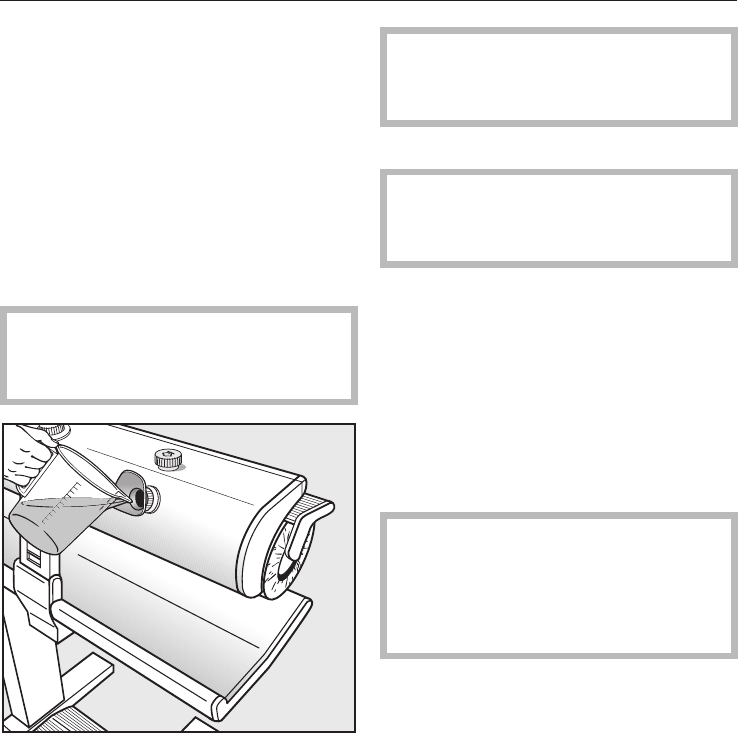
This ironer can also be used with steam
for ironing dry or slightly damp laundry.
Ironing with and without steam
If your laundry is sufficiently damp for
ironing you can iron without using the
steam function. Use steam for ironing
dry laundry, or laundry that is only very
slightly damp.
Filling the water reservoir
Before filling the reservoir with water
switch the appliance off at the
mains.
^
Fill the water reservoir with tap water
with the ironer set up in the working
position. Do not use proprietary
bottled de-ionised water!
^
To make it easier use the screw-on
funnel.
If the water hardness level in your area
exceeds 3 mmol/l (300 mg/l or 17º dH)
it is advisable to mix the tap water with
distilled water in a ratio of 1:1.
,
Do not use distilled water on its
own, as this will cause pitting
corrosion on the reservoir.
Fill the reservoir to the lower edge of
the neck with tap water. Do not fill it
any higher.
^
Replace the cap making sure it is
securely tightened. If it is not secure
there is a danger of water leaking out
of the reservoir when the ironer is
folded up again.
If the reservoir empties during ironing
the indicator lamp in the steam switch
will go out to remind you that it needs to
be filled.
,
Danger of burning! To prevent
the risk of scalding yourself with hot
steam do not open the cap fully. It
can be opened very slightly to
release the steam.
^
Wait until all the steam has escaped
before opening the cap and filling the
reservoir with water.
There may still be residual water in the
tank. The amount will depend on the
water hardness level and the amount of
limescale present.
One reservoir is sufficient for approx.
40 minutes of ironing with steam. It
takes approx. 4 minutes for the water to
heat up to the correct temperature for
steam ironing. The heating-up time may
change as a result of limescale building
up in the reservoir.
Steam
14
